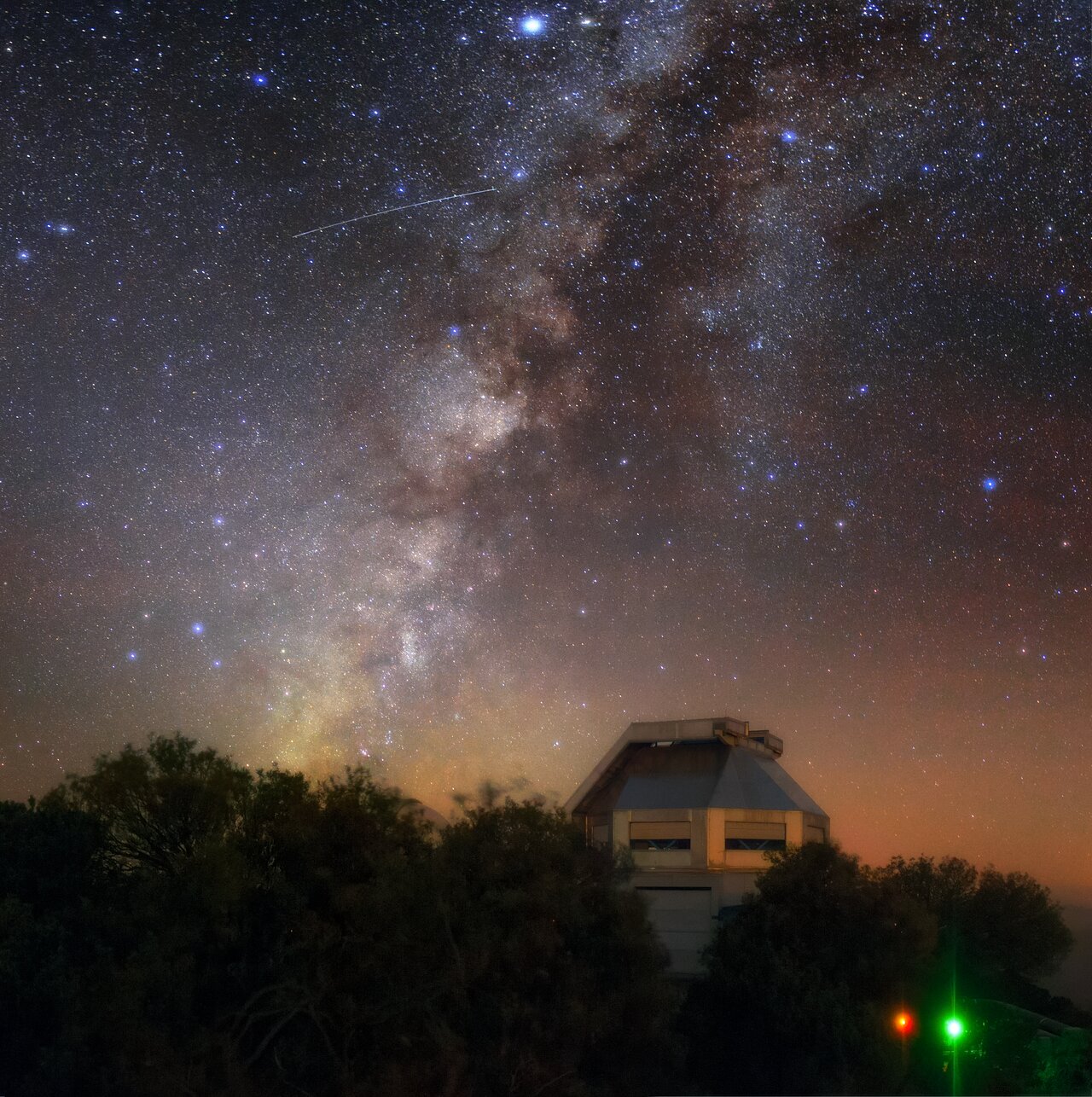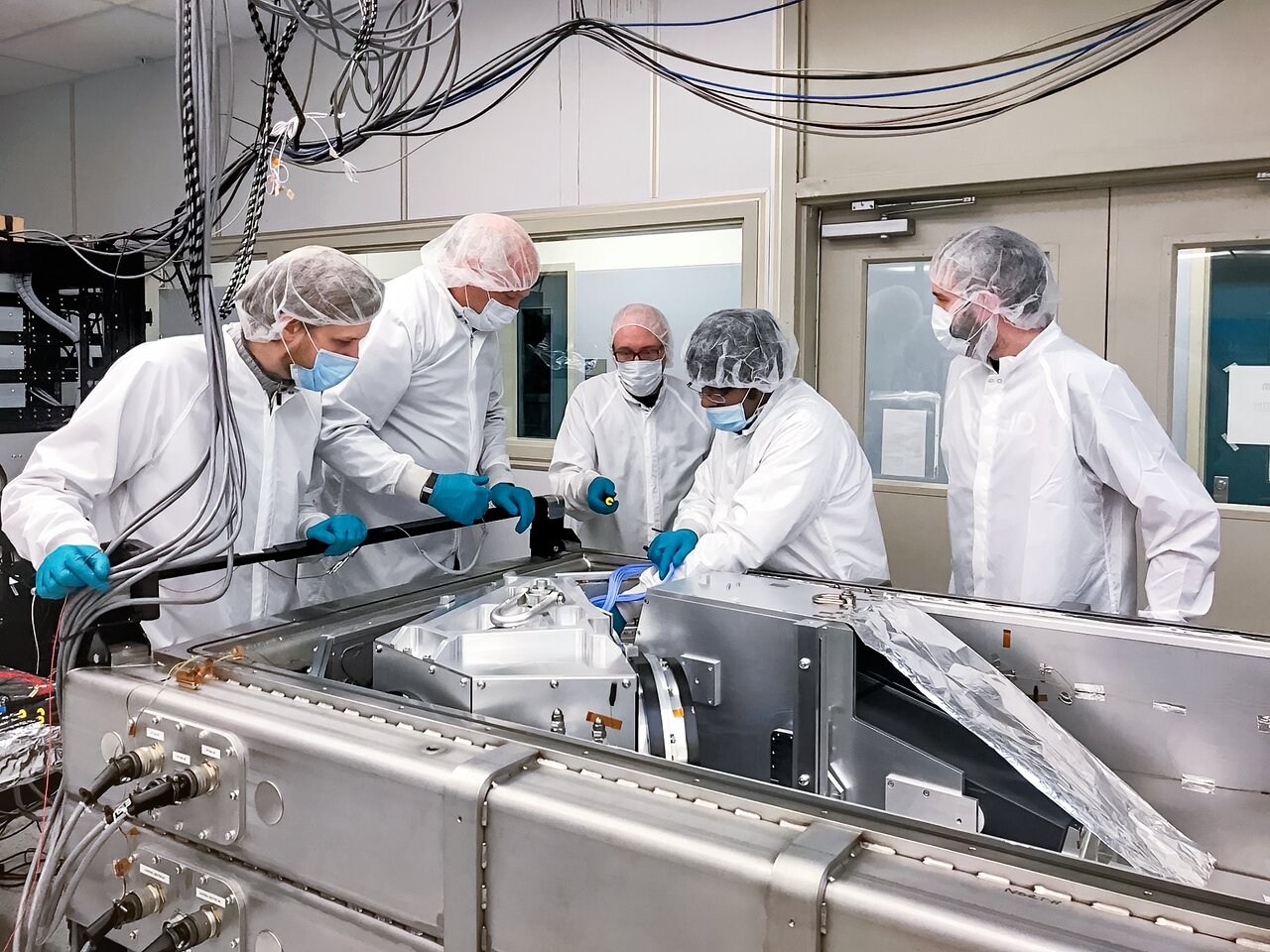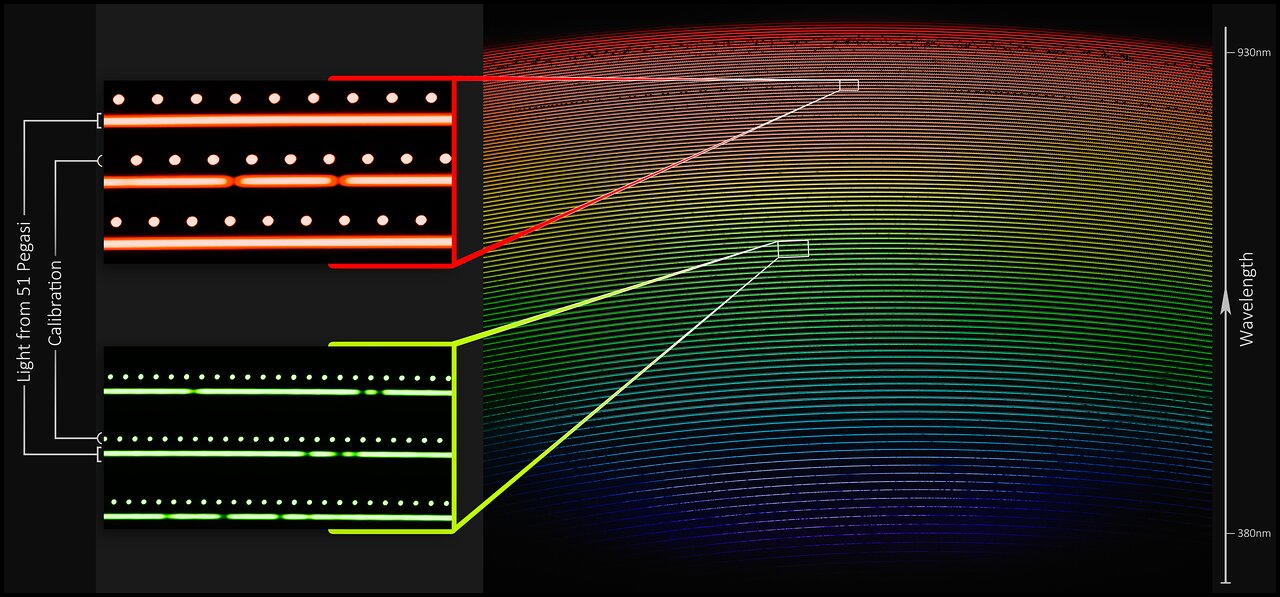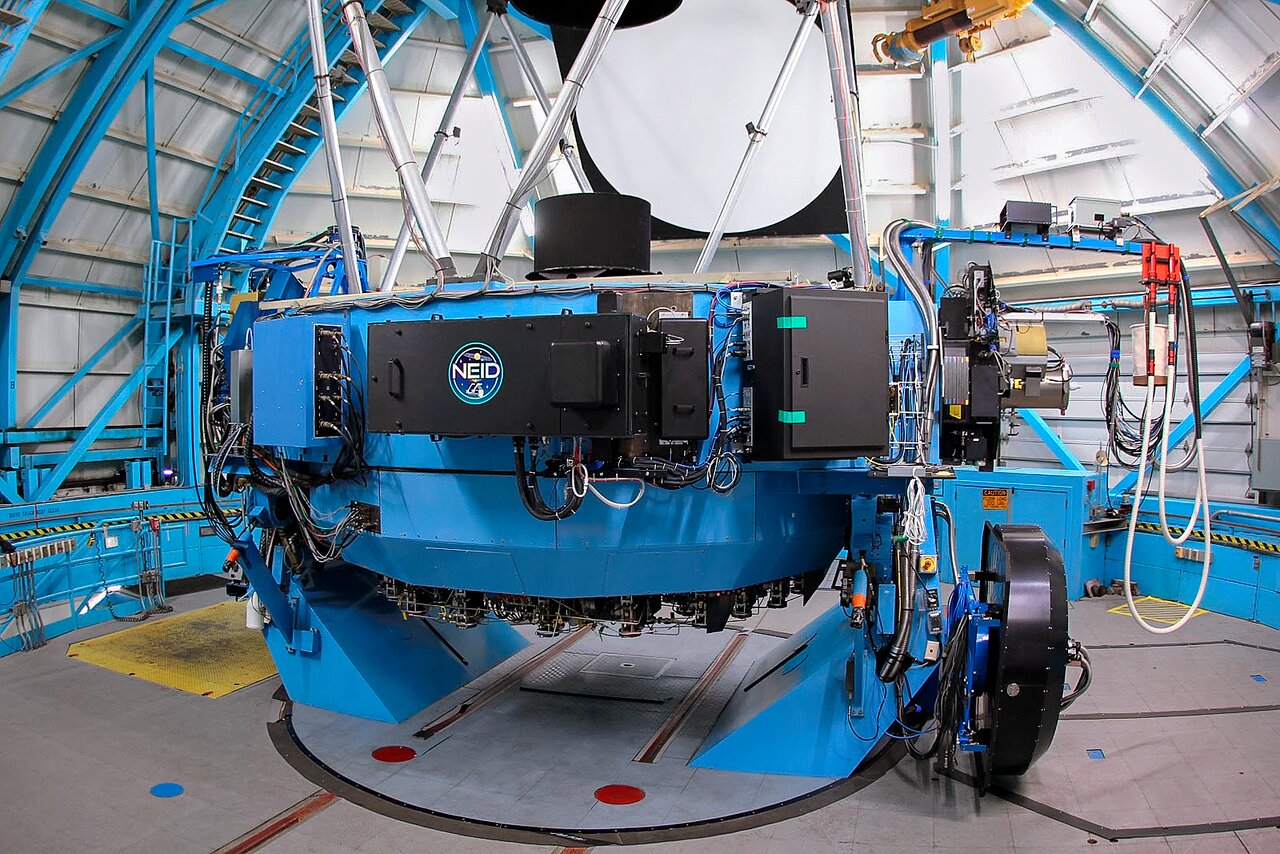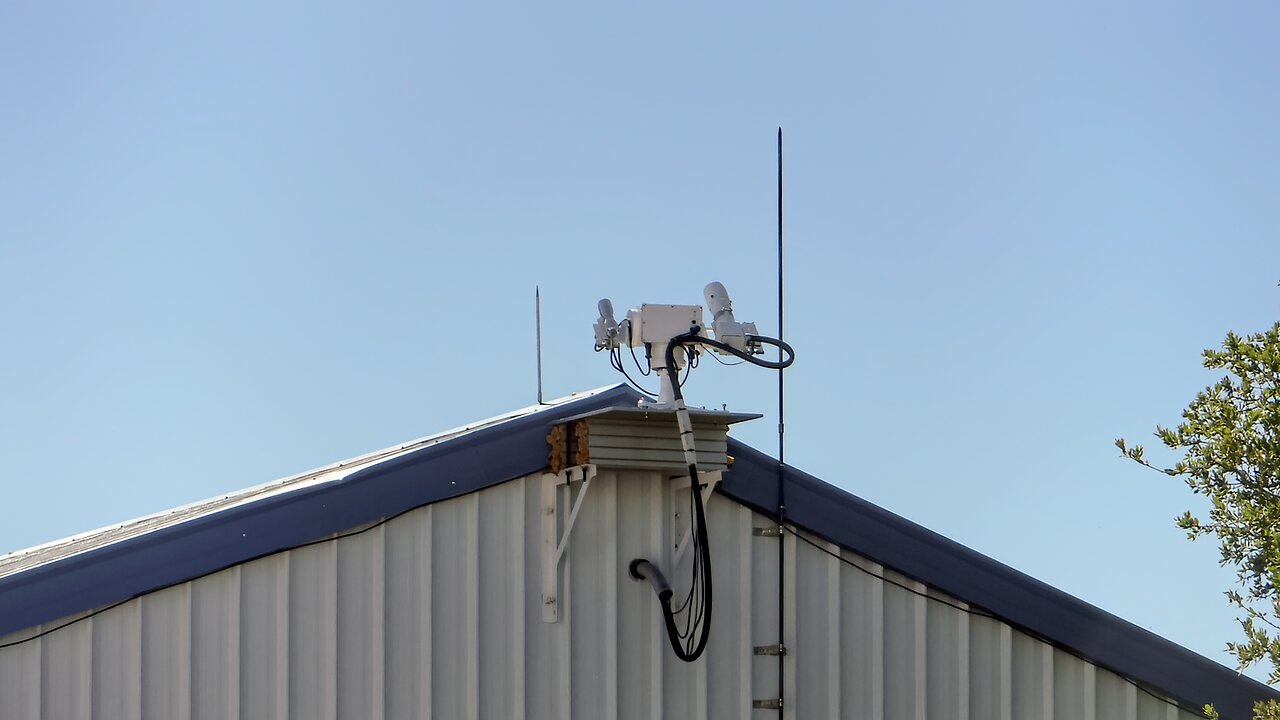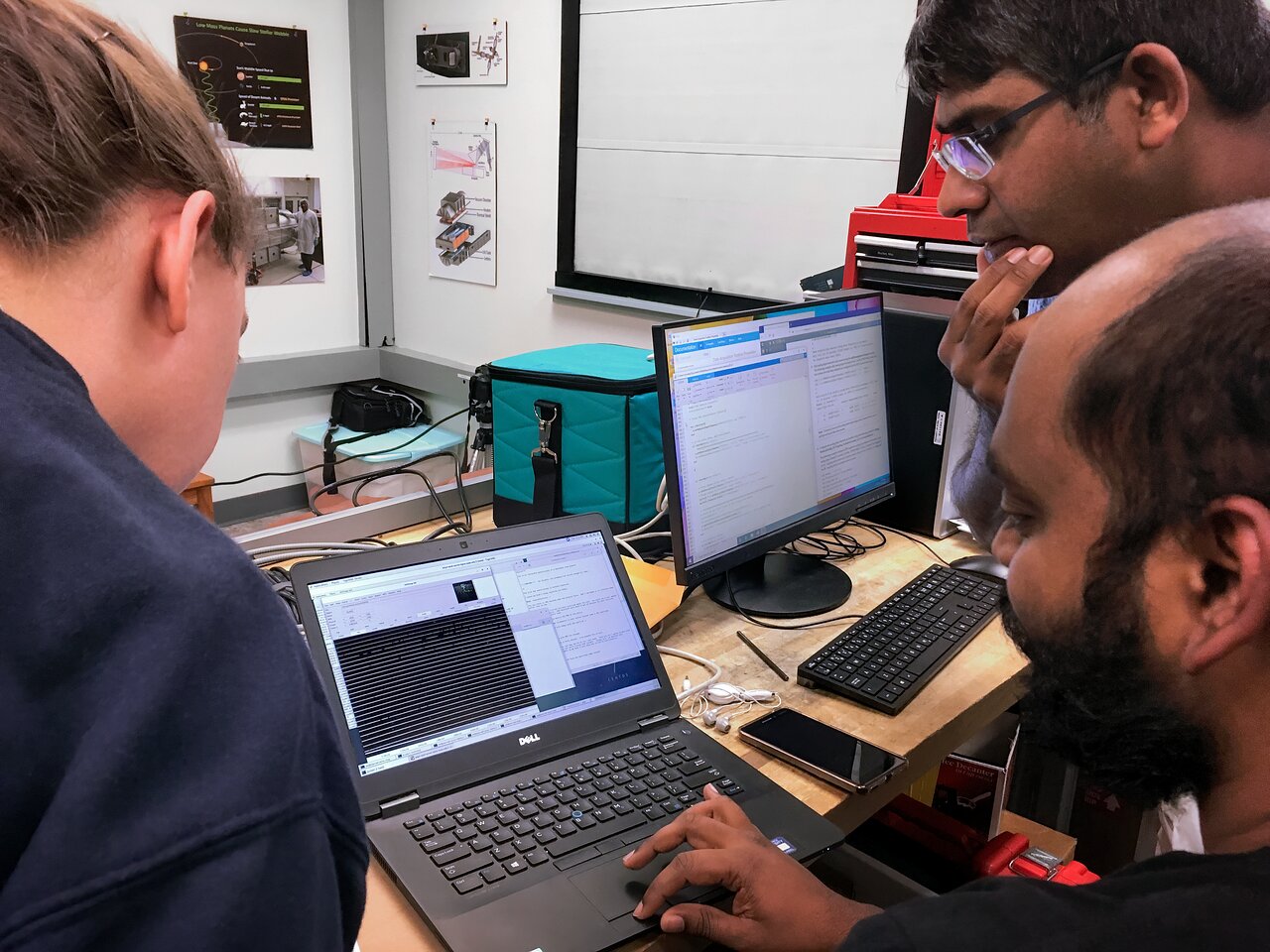
NEID: New hunter of potentially habitable planets
Homing in on Earth-sized planets in the "Goldilocks zone" of other stars, Hot Jupiters, Warm Neptunes and a menagerie of worlds
Profile
Project name:
- NEID
Location:
- WIYN 3.5-meter telescope, Kitt Peak
Instrument type:
- Spectrometer
Operational wavelength:
- 380—930nm (optical light)
First light:
- 2020
Precision:
- Radial velocity measurements down to 27cm/s
Goals:
- Measure masses of exoplanet candidates detected by transit surveys such as Kepler, K2 and TESS
- Embark on a five-year search for Earth-sized planets around other stars.
- Measure a baseline for stellar variability on Sun-like stars
15 Feb. 2022
To date, astronomers have discovered around 5000 confirmed extrasolar planets, or ‘exoplanets’ for short — worlds orbiting stars other than our Sun. Large, massive planets, or hot planets orbiting close to their star, are easiest to find. Discovering smaller worlds, which orbit in their star’s habitable zone at a greater distance from the star, is tougher.
NEID isn't the only new exoplanet-hunting device added to NOIRLab's telescopes. In 2021, the MAROON-X spectrometer installed on the Gemini North telescope on Maunakea in Hawai'i made its first scientific discovery, making radial velocity measurements to determine the mass of the newly discovered rocky planet, Gliese 486b, to be three times that of Earth — a ‘superearth.’ Unlike NEID, which observes the closest and brightest stars, MAROON-X searches for planets around dim red dwarf stars.
Space missions such as NASA’s Kepler Space Telescope and Transiting Exoplanet Survey Satellite (TESS) discover planets by watching for their transits as they cross in front of their host star and block a small percentage of that star's light. The amount of light blocked depends on the size of the transiting planet, and so transits can tell astronomers the diameter of exoplanets, but a transit cannot tell us a planet’s mass. Knowing the mass of an exoplanet is crucial, because once the mass and the diameter are known, it’s a simple calculation to work out an exoplanet’s average density and therefore whether it’s made of gas, liquid/ice, or solid rock.
That’s why instruments such as NEID, which is NOIRLab’s new planet-hunter installed on the 3.5-meter WIYN telescope, are needed. Pronounced NOO-id, it is named after the Tohono O’odham word for “to see.” NEID ‘sees’ stars ‘wobbling’ by measuring the radial velocity of a star’s light — that is, the Doppler shift of the star’s light as it wobbles towards and away from us.
Why would a star wobble? If it’s orbited by an exoplanet, then the exoplanet’s gravity will tug on the star. The star and planet therefore orbit their common center of mass. Because the mass of the star is so great compared to the planet, this center of mass is found within the star, but not at the exact center. So the star appears to wobble around this center of mass. The more massive the planet, the farther from the middle of the star the center of mass is. The wobbling isn’t huge — a star orbited by a Jupiter-sized planet might wobble at a rate of a few dozen km/hr, while an Earth-sized planet in the habitable zone might cause a star to wobble by just 0.4 km/hr.
While the ultimate goal is to be able to detect an Earth-like planet around a Sun-like star, we aren’t there yet.
So that’s where NEID, which is jointly funded by NASA and the National Science Foundation’s Exoplanet Exploration Program, comes in. “We can say for certain that NEID will break new ground and boost space- and ground-based efforts,” says Jayadev Rajagopal an astronomer at NOIRLab.
NEID is designed to nominally detect radial velocities as low as 1 km/hr. During testing NEID even reached a precision slightly better than this as researchers fine-tune the instrument to try and get ever closer to the 0.4 km/hr goal. However, there’s a problem that must first be overcome if that is to be achieved.
“While the ultimate goal is to be able to detect an Earth-like planet around a Sun-like star, we aren’t there yet,” says Sarah Logsdon, who is an assistant scientist on NEID at NOIRLab in Tucson, Arizona. This is because activity on stars, which causes their brightness to fluctuate and huge clouds of plasma to be ejected in coronal mass ejections, can create a radial velocity signal that swamps that of a small planet. To distinguish the signal of such a world, that stellar activity must first be corrected for.
“That’s why having the NEID solar telescope is so valuable,” says Logsdon.
The solar telescope is just an off-the-shelf, 75mm aperture instrument, funded by the Heising-Simons Foundation and perched atop the roof of the WIYN building at Kitt Peak. Optical fibers feed the view through to the NEID spectrograph, allowing astronomers to calculate a baseline of activity, which can then be applied to other Sun-like stars. Subtracting the stellar baseline from the radial velocity measurements should leave behind just the signal of a planet.
“NEID’s solar telescope will help us provide a treasure trove of data on stellar variability, helping us to more fully characterize the properties of the host stars that exoplanets orbit,” says Logsdon. “We expect discoveries to come in the very near future.”
Development on the NEID project began in 2016; it saw first light in 2020 and began science operations in the second half of 2021. Part of its remit is to follow-up on transit discoveries made by the Kepler, K2 and TESS missions, but it will also conduct its own searches for exoplanets, since not all planets in a star system will be seen to transit, and might only be detectable by how their gravity tugs on their host star.
One exciting project is the NEID Earth Twin Survey, which, over a period of 5 years, will observe some of the nearest and brightest stars, searching for potential radial velocity signals from Earth-sized planets in the habitable zone of their star. Many of these stars will be the same ones being observed by TESS, and in unison TESS and NEID will provide a comprehensive exoplanetary survey of the Sun’s nearest neighbors.
NEID comes in two parts (three if you include the solar telescope). One is the port adaptor, which is mounted on the WIYN 3.5-meter telescope and enables the targeting and accurate tracking of a star being observed. The precision is so great that the star can be placed on a specific optical fibre that feeds the NEID spectrograph, which is kept in a vacuum chamber at room temperature. This chamber is highly thermally stable — the temperature remains constant to a level of a thousandth of a degree Celsius, which is important to avoid fluctuations that could interfere with the sensitive radial velocity measurements,
“From top to bottom, NEID is designed for precision,” says Rajagopal. “From maximizing the amount of light that reaches the NEID detector, to keeping the spectrograph at a constant temperature, no detail is too small.”
Part of its remit is to follow-up on transit discoveries made by the Kepler, K2 and TESS missions, but it will also conduct its own searches for exoplanets.
The WIYN telescope was chosen to host NEID partly because its 3.5-meter mirror is a good match for NEID’s requirements on stellar brightness and signal strength. “But most importantly, NOIRLab and WIYN have a successful and mature infrastructure for federal/university partnerships to allow open access and high-impact science,” says Rajagopal.
So perhaps, thanks to those partnerships and NEID’s high-precision measurements, astronomers will soon discover a host of potentially habitable, Earth-mass exoplanets that could then be followed up on by facilities such as NASA’s James Webb Space Telescope, to determine if they really have what it takes to be habitable.
Links


